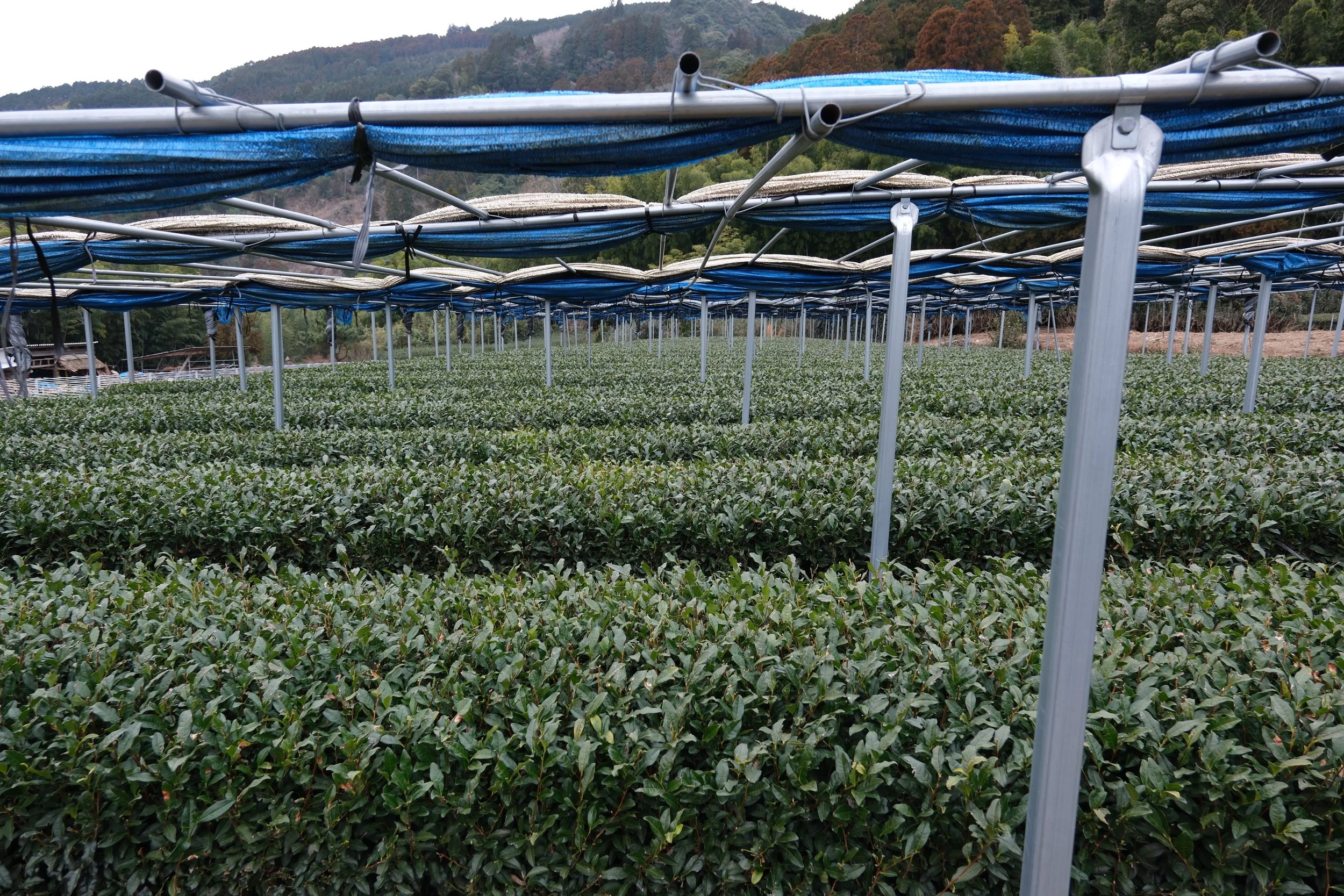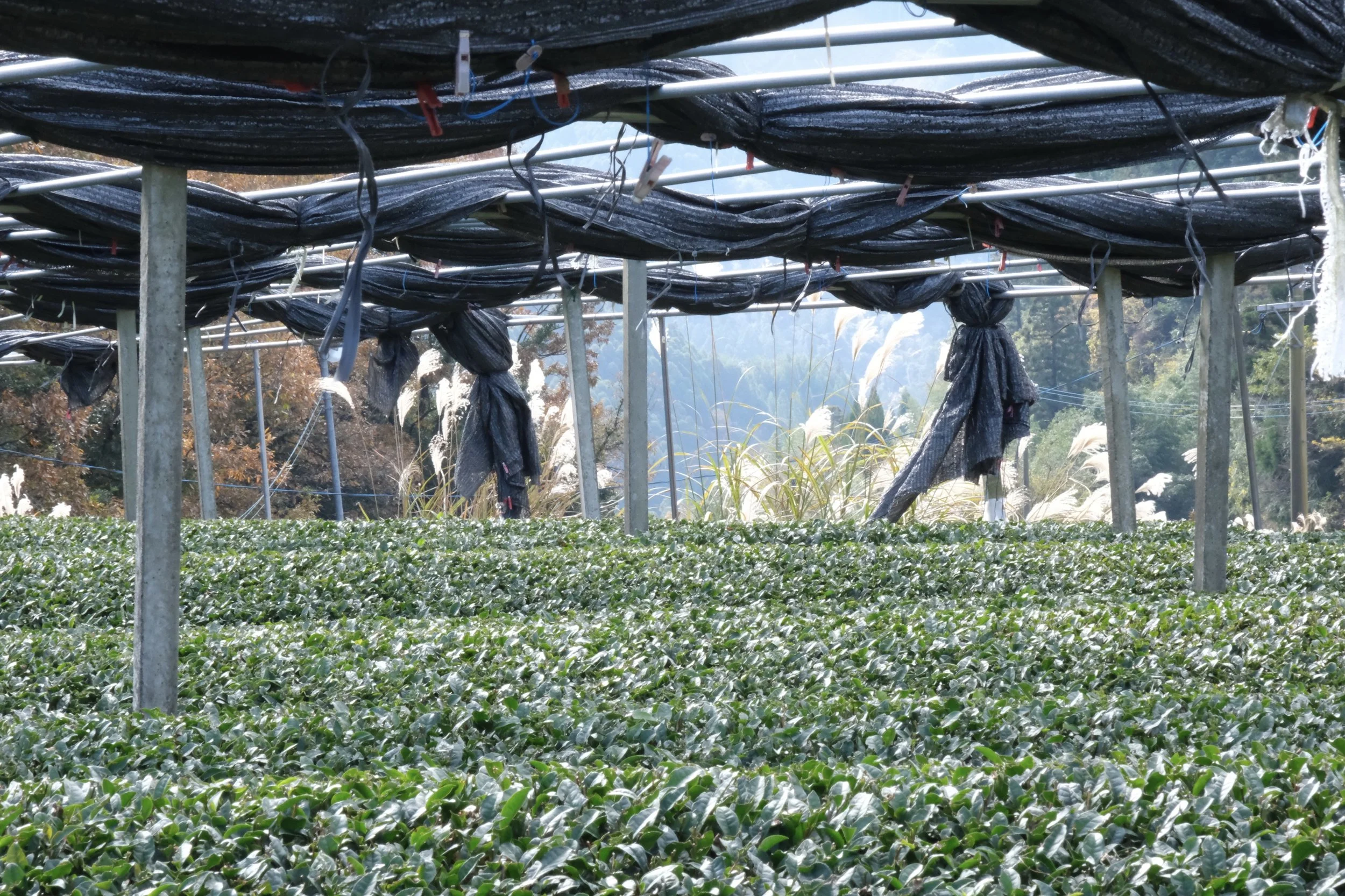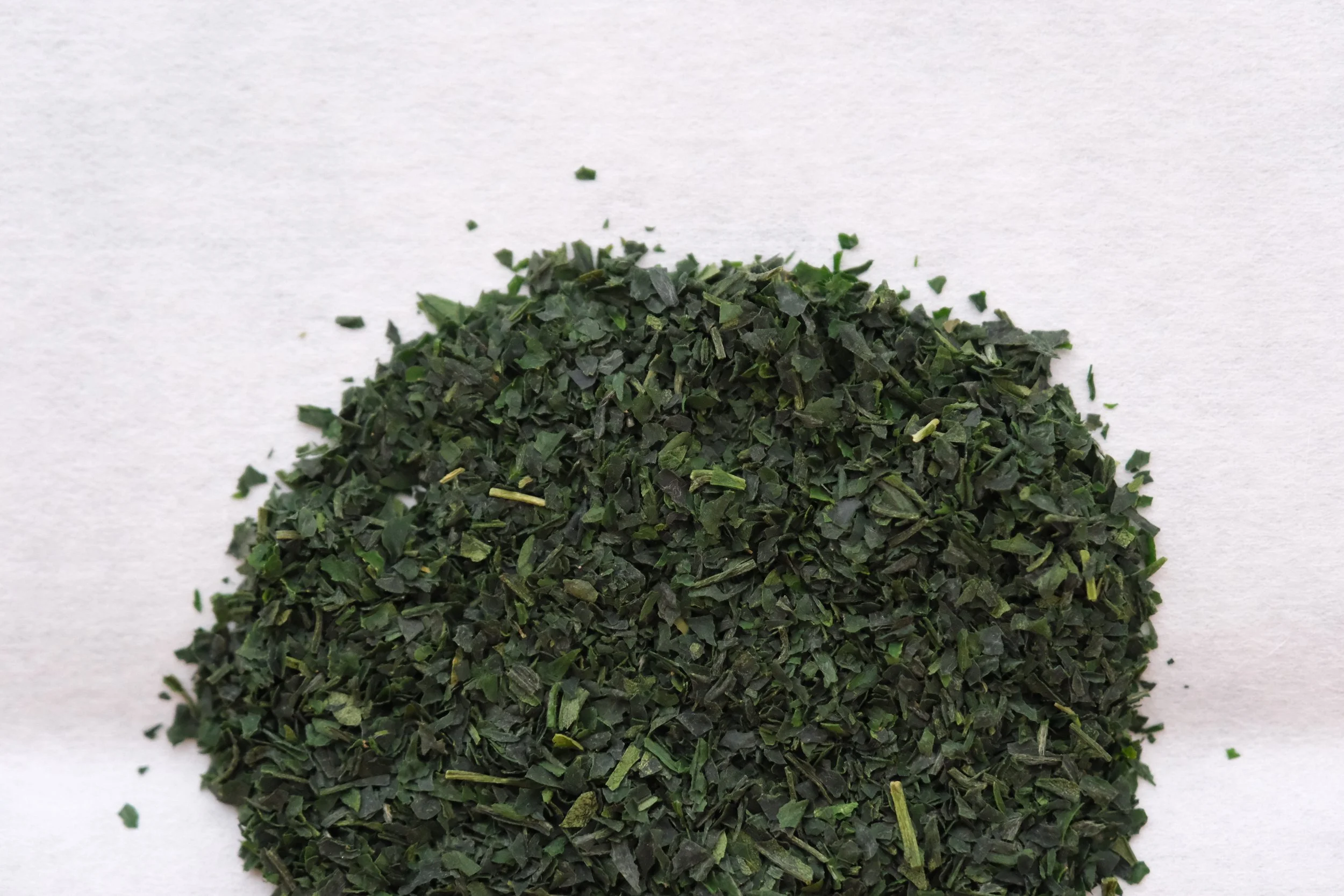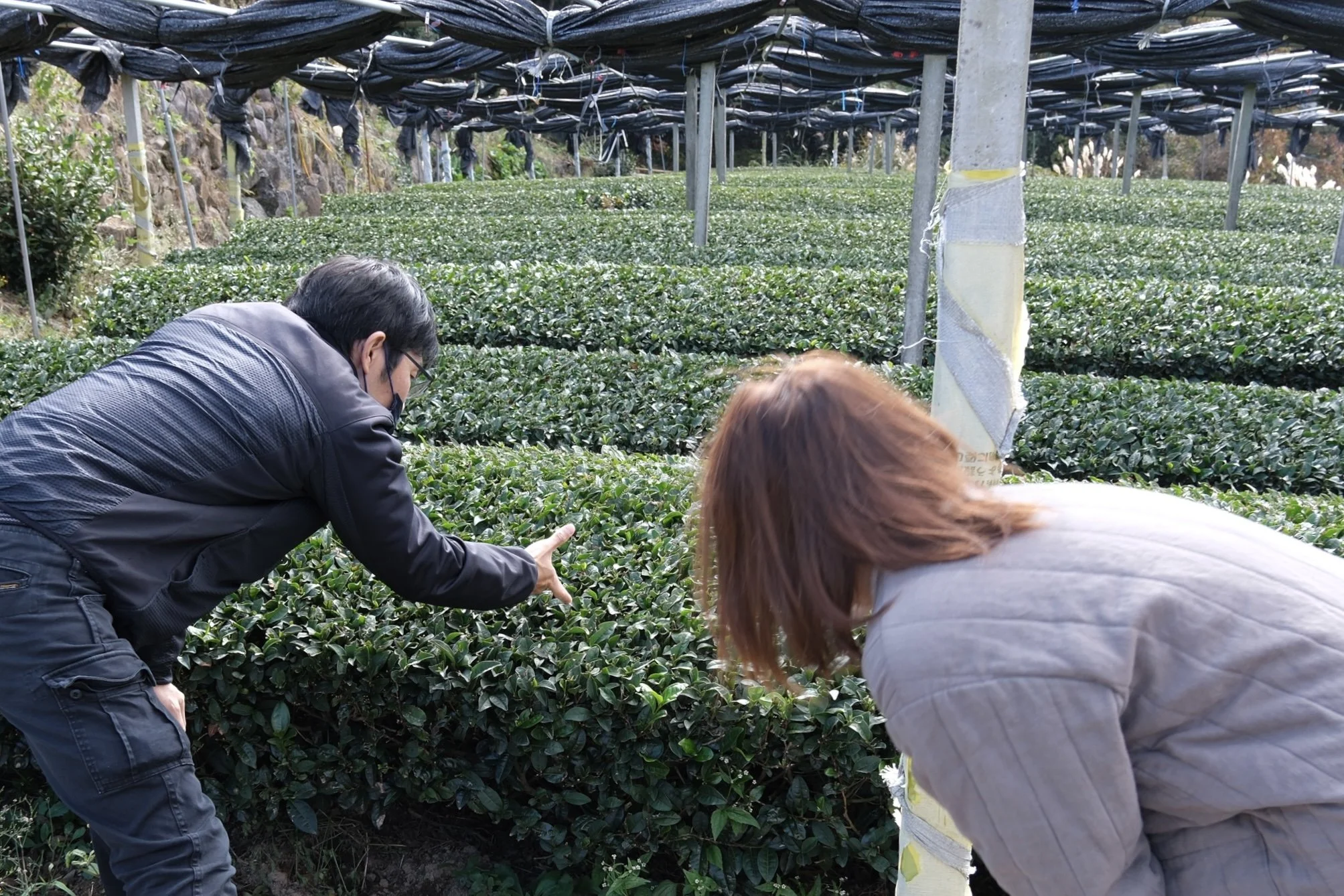Tencha - Hoshino Blend
Tencha background information
Tencha is a rare tea to find in its leaf form. It is grown the same as a lot of Gyokuro - shaded from sunlight for 3-4 weeks before harvest, then steamed immediately and dried - skipping the rolling stages that Gyokuro undergoes. Depending on the quality of the tea, it may be directly shaded with Kanreisha (black or grey plastic shading material), indirectly shaded with Kanreisha, or indirectly shaded with Honzu (rice straw). The colour of the leaf flakes is deep green which signifies that the leaves have been shaded before harvest though each cultivar will have its own shade of green (usually cultivars with midori in their names are more green than average!). The tea plant will over produce chlorophyll during the stressful shading time which requires meticulous care from the tea farmers, and the leaves will even stretch out to increase their surface area in an attempt to catch as much light as possible.
First, the freshly steamed leaves are blow dried in tall nets that are around 6 metres tall. This is to remove surface moisture from the saturated leaves, but importantly also to separate them from sticking together, which would make the drying processes longer and more inconsistent. The main drying process is done in a special oven called a tencharo. Imagine a slow conveyor belt going through a long, thin brick oven multiple times until dry and crispy. Instead of being rolled, tencha is de-stemmed and de-veined, leaving small flakes of the tea leaves. Another byproduct of tencha processing is a light fibrous material. The tea flakes are then cut into smaller pieces and aged (the jukusei process) at very low temperatures in an oxygen free environment.
When it is time, they will be ground to order in a stone mill (if it is a good quality tea) slowly in chilled rooms to reduce oxidation. One stone mill can yield only around 40g per hour!!! This is how good quality matcha is grown and processed. The vast majority of tencha is ground into matcha so not many people have had the pleasure of tasting it in its leaf form.
Please read our blog post From Tencha To Matcha if you are interested!
Notes for this particular tea:
This tencha is a blend of cultivars, grown in Yame, Fukuoka prefecture and produced by 10th Rank Chashi Yamaguchi san. Like Yame matcha, we find this tea has a nutty profile that can be extracted with even very cold water or very hot water.
We find tencha to be rather unique as a steamed Japanese green tea, where we prefer to cold brew the tea or use very high temperature water (by Japanese green tea standards). By all means experiment to find your personal brewing preferences but our recommendation is:
Hot brewing guide:
Tencha 3 grams
Water 50-100ml
First infusion 80°C for 120sec
Second infusion 85°C for 45sec
Third infusion 90°C for 10sec
Cold brewing guide:
Tencha 4 grams
Water 300ml @ 5-20°C
Duration 8-14 hours in the fridge
When cold brewing Japanese green teas it is important to use soft water - hard water will cloud the taste and in our opinion ruin the potential of the tea, no matter the quality.
Storage:
Store in a cold environment (6-10°C) and avoid exposure to light, air, heat, moisture and strong smells - these will degrade your tea. Store in an airtight container or if keeping in the bag, gently squeeze out as much air as possible, seal, and keep in a zip-lock bag in the fridge. Once opened, best consumed within one-two months, or freeze if you wish to keep for longer. If you will be freezing the tea, place in the fridge for two hours to allow the temperature to warm gently before opening.




